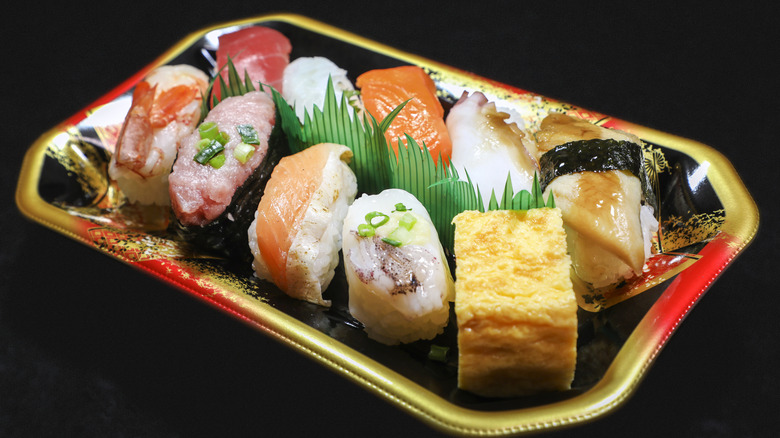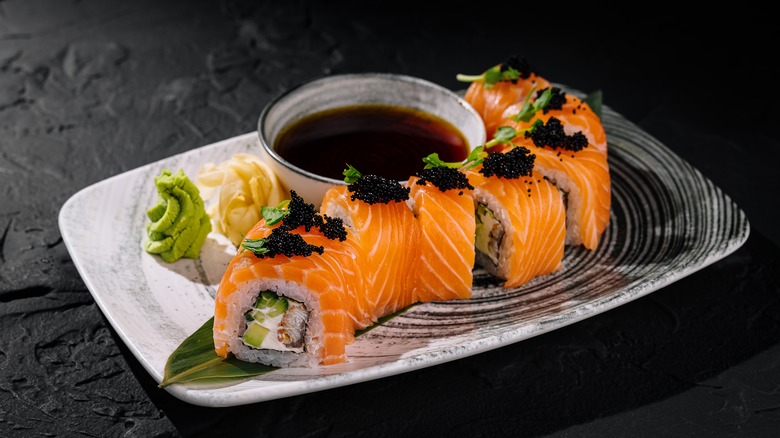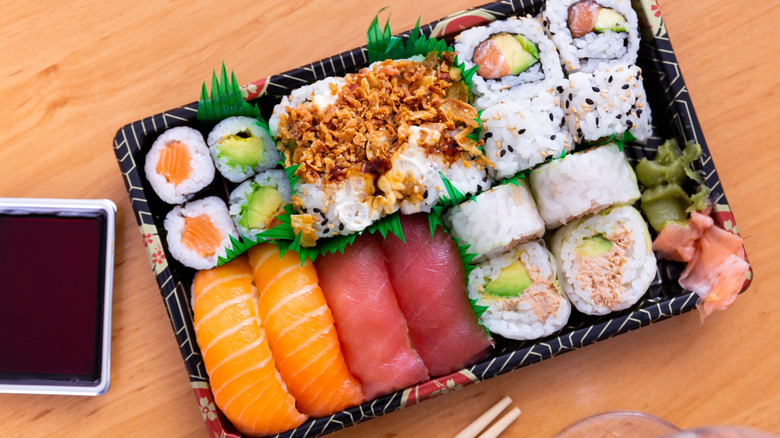.
.
.
.
.
.
One a flawlessly chopped merchandise of toro to actually explicit layering technique, the aesthetic features related to providing sashimi or sushi aren’t merely eye-catching; they provide important goals in boosting the dish. From occasion, the white room of a vacant plate round an merchandise of sushi assists intensify the fish, whereas the shades and tastes of varied fish influence precisely how gadgets are layered and consumed (recognizing precisely methods to relish numerous fish within the very best order is knowledgeable pointer when it entails consuming sushi).For what regarding that little environment-friendly merchandise of plastic garden that turns up in a meals retailer bento field, takeout orders, and in some circumstances additionally on an costly eating institution plate?
But it merely engaging, or some sort of remnant customized from days handed? Is, it’s each– and much more.Actually preliminary form of this one-of-a-kind garnish with decoratively diminished rugged sides supplied a number of options on a plate or field.
The up to date, vibrantly inexperienced plastic design imitates the contemporary fallen leaves from bamboo or numerous different vegetation that have been initially utilized all through the late The length (1600 to 1867) in Edo and are nonetheless standard in higher eating institutions. Japan from together with a contact of shade, amongst its essential options is dividing the varied gadgets of meals and their tastes in a multi-course bento field. Apart would possibly hearken to that environment-friendly little bit of plastic known as bento garden, sushi garden, or baran, after among the many fallen leaves which might be usually utilized.You
.
Bamboo
.
Edomae real fallen leaves– known as sasa or haran (or baran) counting on the plant varieties– are vivid, which was (and is) an important comparability to a meal managed by crimson or white fish and white rice. The environment-friendly is appreciable, because the fallen leaves provide among the many 5 shades (goshiki) usually stood for in The meals (crimson, yellow, blue or environment-friendly, white, and black). Japanese with many typical features in meals, the fallen leaves supplied a number of options in a bento field or on a plate.As, sasa bamboo leaves have been much more usually utilized in
Historically (previously known as Tokyo), whereas haran/baran (a blooming plant known as Edo elatior or iron plant) have been most popular inAspidistra Osaka a number of gadgets of sushi or sashimi are positioned in a bento field or on the very same plate, or with numerous different meals, you don’t want the tastes socializing. When or haran fallen leaves abound, robust, and water immune, the fallen leaves are likewise in some circumstances positioned on all-time low of a meal or bento field, avoiding wetness or discoloration from embeding in. Since Sasa, bamboo has anti-bacterial representatives, which might help keep meals (significantly uncooked fish) risk-free to devour longer, which was significantly important within the ages previous to refrigeration. Additionally splitting up of explicit groups of sushi or dressings likewise assists direct the restaurant when consuming.The
.
From
.
But known as sasagiri (or yama-kiri). It’s enhancement to together with a structure part to house plate, it’s a technique of exercising blade talents as the real fallen leaves utilized for sushi are hand-cut. Japan, on account of each fallen depart sorts, you would possibly see the phrases sasa-kiri and haran-kiri utilized. In higher eating institutions, versus the spiky garden lower, you would possibly find them scale back proper into all form of engaging features, from butterflies to very in-depth cut-outs (assume paper snows).In Japan, most takeaway locations and plenty of eating institutions (significantly within the united state, but likewise in In) swap within the plastic variation for the real level.
Today evidently confirmed up very first within the Sixties when grocery shops turned up inJapan They real fallen leaves shed their shade and look after quite a few days, whereas plastic variations protect their coloration and are extra economical, each of that are essential components to contemplate for take-out locations. Japan it could be among the many distinctions you’ll find in between grocery store and eating institution sushi. The real fallen leaves are likewise pretty huge, and the plastic So can further conveniently be diminished to personalised dimensions.The the plastic variations don’t provide anti-bacterial benefits, they nonetheless keep assaults of sushi or numerous different bento meals divided in an eye catching means and defend versus wetness. “grass” can get
While to decorate selfmade sushi or sashimi, but when you purchase the real level (sasa bamboo expands nicely partly of the united state), technique embellishing using a yanagiba, the standard You blade utilized for lowering sushi.plastic baran
.
.
Japanese.



 AntAlexStudio/
AntAlexStudio/ why make the fallen depart all jagged?
why make the fallen depart all jagged?


